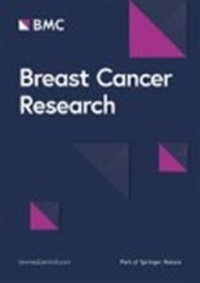Outcomes of sentinel node biopsy according to MRI response in an association with the subtypes in cN1–3 breast cancer after neoadjuvant systemic therapy, multicenter cohort study
IF 5.6
1区 医学
Q1 ONCOLOGY
引用次数: 0
Abstract
This study investigated the feasibility of sentinel lymph node biopsy (SLNB) after neoadjuvant systemic therapy (NAST) in patients with initially high nodal burden. In the multicenter retrospective cohort, 388 individuals with cN1–3 breast cancer who underwent NAST and had SLNB followed by completion axillary lymph node dissection were included. In an external validation cohort, 267 patients with HER2+ or triple-negative breast cancer (TNBC) meeting similar inclusion criteria were included. Primary outcome was the false-negative rates (FNRs) of SLNB according to the MRI response and subtypes. We defined complete MRI responders as patients who experienced disappearance of suspicious features in the breast and axilla after NAST. In the multicenter retrospective cohort, 130 (33.5%) of 388 patients were of cN2-3, and 55 (14.2%) of 388 patients showed complete MRI responses. In hormone receptor-positive HER2− (n = 207), complete and non-complete responders had a high FNRs (31.3% [95% CI 8.6–54.0] and 20.9% [95% CI 14.1–27.6], respectively). However, in HER2+ or TNBC (n = 181), the FNR of complete MRI responders was 0% (95% CI 0–0), whereas that of non-complete responders was 33.3% (95% CI 20.8–45.9). When we validated our findings in the external cohort with HER2+ or TNBC (n = 267), of which 34.2% were cN2-3, the FNRs of complete were 7.1% (95% CI 0–16.7). Our findings suggest that SLNB can be a reliable option for nodal status evaluation in selected patients who have responded well to NAST, especially in HER2+ and TNBC patients who show a complete MRI response.多中心队列研究:根据磁共振成像反应进行前哨节点活检的结果与新辅助系统疗法后 cN1-3 乳腺癌亚型的关系
这项研究探讨了在新辅助全身疗法(NAST)后对最初结节负荷较高的患者进行前哨淋巴结活检(SLNB)的可行性。在多中心回顾性队列中,共纳入了 388 例 cN1-3 乳腺癌患者,这些患者接受了 NAST 并进行了 SLNB,随后完成了腋窝淋巴结清扫。在外部验证队列中,纳入了267名符合类似纳入标准的HER2+或三阴性乳腺癌(TNBC)患者。主要结果是根据 MRI 反应和亚型确定 SLNB 的假阴性率 (FNR)。我们将完全MRI反应者定义为NAST后乳腺和腋窝可疑特征消失的患者。在多中心回顾性队列中,388 例患者中有 130 例(33.5%)为 cN2-3 型,388 例患者中有 55 例(14.2%)表现出完全的 MRI 反应。在激素受体阳性的HER2-(n = 207)患者中,完全和非完全应答者的FNR较高(分别为31.3% [95% CI 8.6-54.0]和20.9% [95% CI 14.1-27.6])。然而,在HER2+或TNBC(n = 181)中,MRI完全应答者的FNR为0%(95% CI 0-0),而非完全应答者的FNR为33.3%(95% CI 20.8-45.9)。当我们在 HER2+ 或 TNBC(n = 267)外部队列(其中 34.2% 为 cN2-3)中验证我们的研究结果时,完全反应者的 FNR 为 7.1%(95% CI 0-16.7)。我们的研究结果表明,SLNB 可以作为对 NAST 反应良好的特定患者进行结节状态评估的可靠选择,尤其是在 MRI 反应完全的 HER2+ 和 TNBC 患者中。
本文章由计算机程序翻译,如有差异,请以英文原文为准。
求助全文
约1分钟内获得全文
求助全文
来源期刊

Breast Cancer Research
医学-肿瘤学
自引率
0.00%
发文量
76
期刊介绍:
Breast Cancer Research is an international, peer-reviewed online journal, publishing original research, reviews, editorials and reports. Open access research articles of exceptional interest are published in all areas of biology and medicine relevant to breast cancer, including normal mammary gland biology, with special emphasis on the genetic, biochemical, and cellular basis of breast cancer. In addition to basic research, the journal publishes preclinical, translational and clinical studies with a biological basis, including Phase I and Phase II trials.
 求助内容:
求助内容: 应助结果提醒方式:
应助结果提醒方式:


